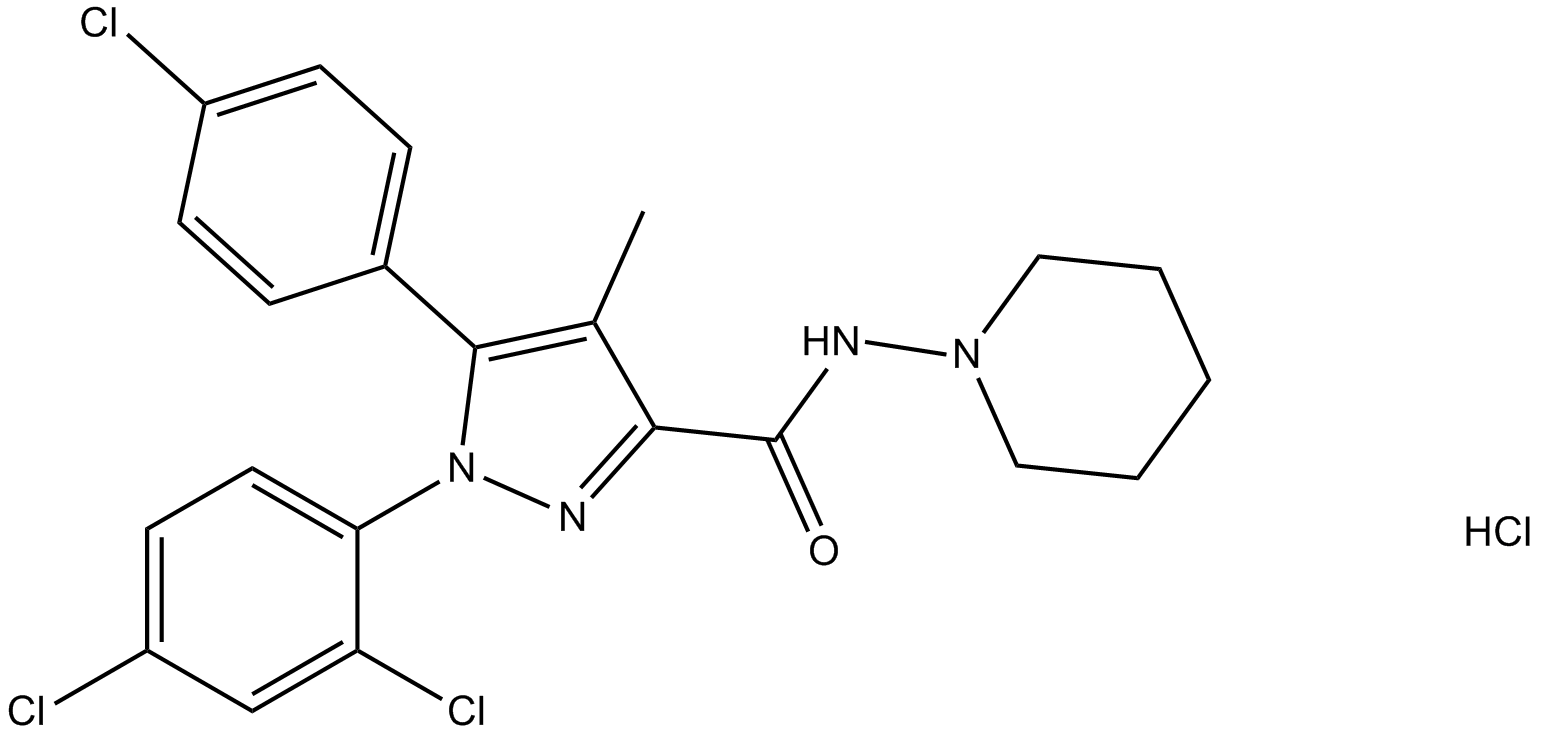Rimonabant hydrochloride |
| Catalog No.GC16466 |
A potent and selective CB1 receptor antagonist
Products are for research use only. Not for human use. We do not sell to patients.

Cas No.: 158681-13-1
Sample solution is provided at 25 µL, 10mM.
Rimonabant hHydrochloride (SR 141716A Hydrochloride) is a highly potent and selective central cannabinoid receptor (CB1) antagonist with an Ki of 1.8 nM. Rimonabant hHydrochloride (SR 141716A Hydrochloride) also inhibits Mycobacterial membrane protein Large 3 (MMPL3).
Rimonabant could inhibit the growth of Mtb with an MIC of 54 μM. MmpL3, an anti-TB target, is the direct target of rimonabant[2].Rimonabant itself (10-12-10-3 M, 12 concentrations) inhibits the basal binding of [35S]GTPgS to human cortical membranes in a concentration dependent manner, with a -log IC50 of 4.7±0.2 (IC50 = 20 μM) and a maximal inhibition of 48±2%[3].
Rimonabant (10 mg/kg by gavage) is fed for 2 weeks to 3-month-old male obese Zucker rats as an impaired glucose tolerance model and for 10 weeks to 6-month-old male obese Zucker rats as a model of the metabolic syndrome. RANTES and MCP-1 serum levels are increased in obese vs lean Zucker rats and significantly reduced by long-term treatment with Rimonabant, which slowes weight gain in rats with the metabolic syndrome. Neutrophils and monocytes are significantly increased in young and old obese vs lean Zucker rats and lowered by Rimonabant. Platelet-bound fibrinogen is significantly enhanced in obese vs lean Zucker rats of both age, and is reduced by Rimonabant [1].Rimonabant (20 mg daily) exhibits a significant reduction in many cardiometabolic risk factors[4].
References:
[1]. Seely KA, et al. AM-251 and rimonabant act as direct antagonists at mu-opioid receptors: Implications for opioid/cannabinoid interaction studies. Neuropharmacology. 2012 Oct;63(5):905-15.
[2]. Zhang B, et al. Crystal Structures of Membrane Transporter MmpL3, an Anti-TB Drug Target. Cell. 2019 Jan 24;176(3):636-648.e13.
[3]. Erdozain, A. M. et al. The inverse agonist effect of rimonabant on G protein activation is not mediated by the cannabinoid CB1 receptor: Evidence from postmortem human brain Biochemical Pharmacology (2012), 83(2), 260-268.
[4]. Erdozain, A. M. et al. The inverse agonist effect of rimonabant on G protein activation is not mediated by the cannabinoid CB1 receptor: Evidence from postmortem human brain Biochemical Pharmacology (2012), 83(2), 260-268.
Average Rating: 5 (Based on Reviews and 30 reference(s) in Google Scholar.)
GLPBIO products are for RESEARCH USE ONLY. Please make sure your review or question is research based.
Required fields are marked with *




















